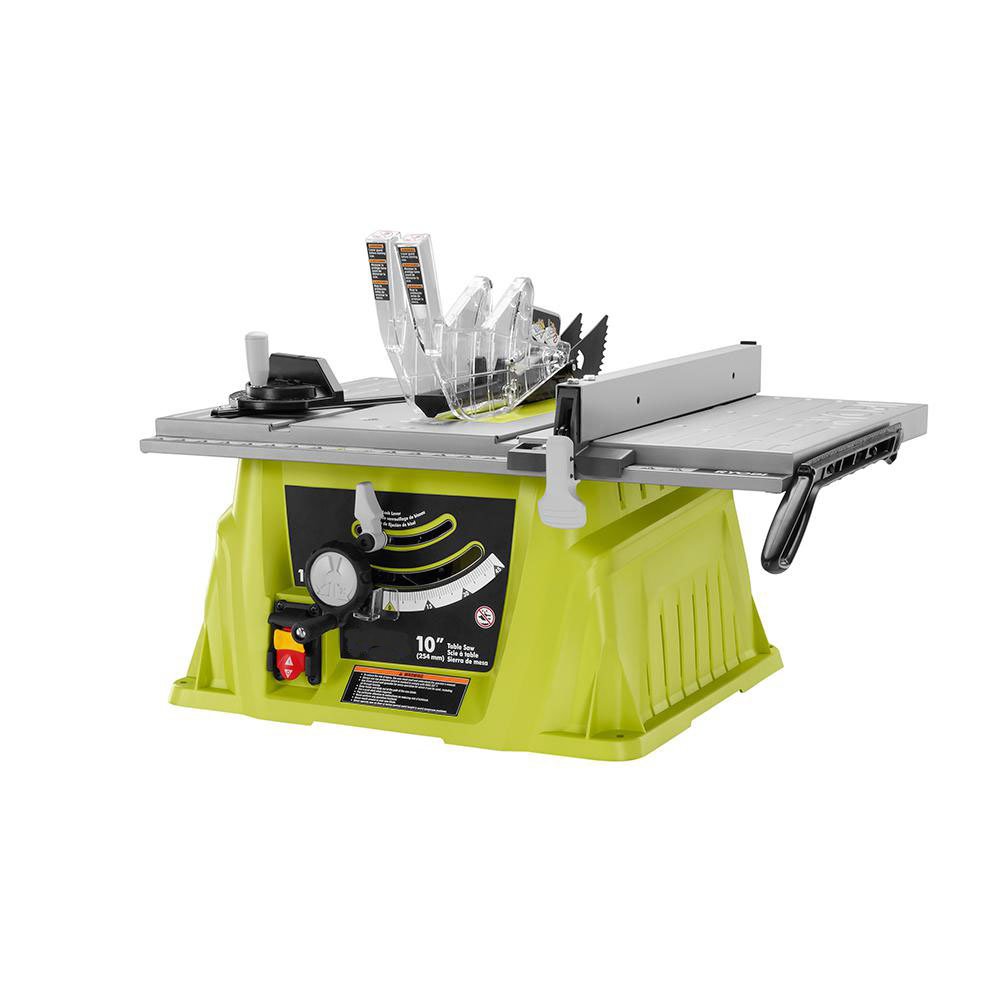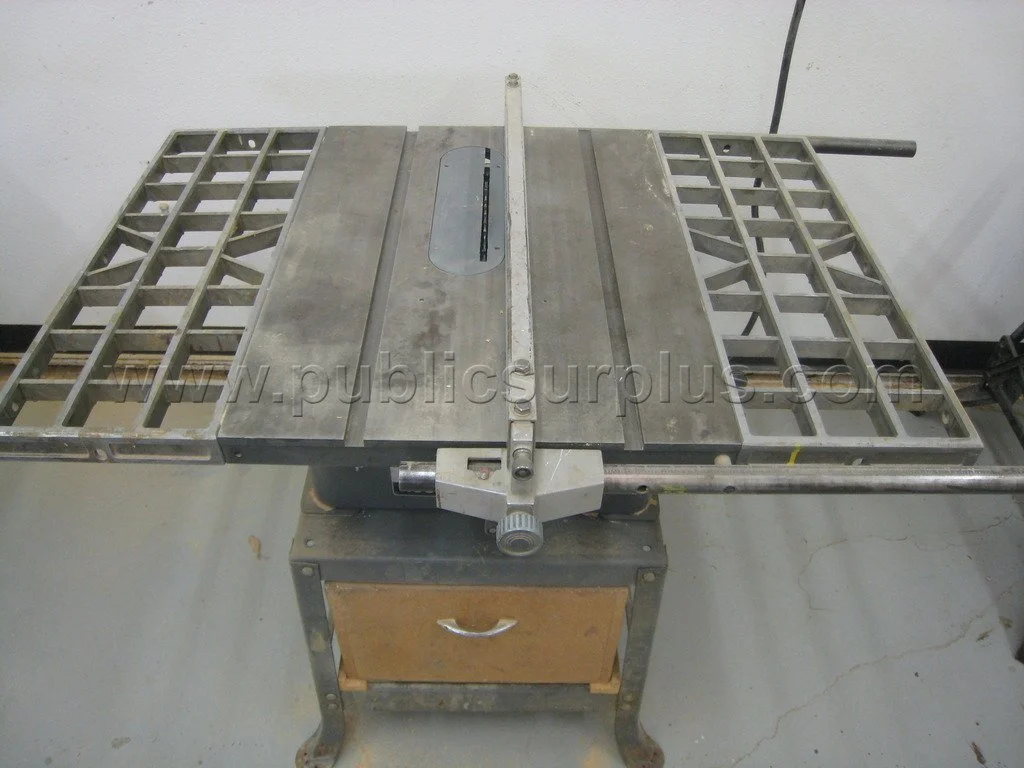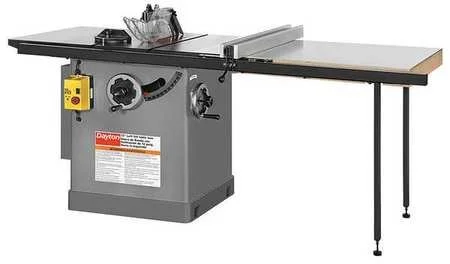CHOOSING A TABLE SAW
I’m often asked for advice on choosing the right table saw. It seems that a lot of new woodworkers looking for their first saw — and even experienced woodworkers looking to replace their existing saws — are making poor decisions when it comes to choosing the right type with the right features at the right price. This isn’t a small investment, and the worst thing you can do is settle for something less than you should, only to have to replace it later.
As someone who has tried just about every kind of saw out there, I feel like I can help you make the right decision.
In this post, we’ll go through the pros and cons of the four most common types of table saws out there. I’ll share observations and opinions based on my personal experience, and I’ll wrap up with my recommendations — some of which may surprise you. So let’s get started.
Portable and Jobsite Saws
For a short time, I owned a portable benchtop table saw. At first, I thought it was great. It was lightweight and compact, I could put it on a shelf, throw it in the trunk of my car, and set it on saw horses outside. Handy, right? But it was also woefully underpowered. It struggled to rip hardwoods. The aluminum top was small and not even close to flat. The fence was flimsy and nearly impossible to keep parallel to the blade. The direct-drive universal motor was loud, and the saw vibrated excessively. I came to realize it was more of a saw-shaped object than a proper table saw. But at least it was easy to throw away.
Later, we got a Bosch portable jobsite saw. After the benchtop saw, this thing felt like a dream. You have to give credit to Bosch; they really revolutionized portable saws with bigger motors, better fences, and clever features like extendable rip capacity and all-terrain stands. If all I ever made were small boxes with thin hardwoods, I may have been able to make do with that saw. But while the fence was better, it still didn’t lock down reliably parallel to the blade. The table was still small, its light weight didn’t dampen vibration sufficiently, and with only 24 inches of rip capacity, it was difficult to work with sheet goods.
The bottom line on portable and jobsite saws is that you may get by with one if you're a contractor or an occasional hobbyist. But to get a good one, you have to spend about as much as you would on a larger contractor's saw. So unless space and portability are major issues, I’d pass.
Contractor's Saws
My first real table saw was a used Delta/Rockwell contractor’s saw from the ‘70s. They called these contractor’s saws because they were smaller and lighter than big cabinet saws, so technically, you could remove the motor that hung out the back and lug the thing to a jobsite. But you wouldn’t want to do that very often because they’re pretty darn heavy.
Mine had a cast iron top, which was way better than my father-in-law’s old Craftsman with its crappy aluminum top and stamped steel wings. Cast iron stays flatter, and the added weight dampens vibration better. Unfortunately, the wings on mine were cast aluminum, but it was still a great saw.
I occasionally see old cast iron contractor’s saws on Craigslist for a couple hundred bucks, even today. That’s a lot of saw for your money! They typically have 1-1/2HP motors that hang out the open back, which is bad for dust collection but provides plenty of power for most hobby-level woodworking. The fences on older models are usually junk, but there are good aftermarket options available. They do vibrate a bit, both from their relatively light weight and their single v-belt drive. And they can be a little difficult to align and keep that way because you have to adjust the trunnions inside the saw instead of the table on top.
But if you spend $200-300 on a good used contractor’s saw with a cast iron top and add another $200-300 for a high-quality fence system, you just might have a saw that will do everything you need for less than a quarter of the price of a new cabinet saw.
Cabinet Saws
Cabinet saws take their name from the cabinet that fully encloses the motor within the base. They are big, heavy, powerful, and expensive. They are for professional woodworkers and serious hobbyists. The tops are larger, the internal mechanisms are heavier-duty, and the motors are more powerful. They are built to absorb vibration and remain precisely aligned despite cutting through the thickest, hardest woods all day long. Their enclosed bases are better for dust collection, their fences are usually robust and accurate, and their motors are at least twice as powerful as a contractor’s saw.
Every serious woodworker wants a cabinet saw, it seems. But they are not without drawbacks. For one thing, they are expensive. Even good used ones may cost a thousand dollars or more, and new ones can be as much as $5000. They usually require 220 volts on a dedicated 30-amp circuit. And their size and weight make them difficult to move, especially getting them into the shop in the first place.
I recommend a cabinet saw for anyone who can afford it, but I do admit that they may be overkill for many hobbyists. So if you’re on a budget and you work mostly with 3/4-inch thick materials and only build smaller projects and the occasional piece of furniture, you may not need a cabinet saw.
Hybrid Saws
Hybrid saws are relatively new to the woodworking world. They combine some of the features of a cabinet saw, like an enclosed motor and often more substantial bearings and trunnions, with the smaller footprint and price point of a contractor’s saw. They are easier to align and keep aligned than a contractor’s saw, but they feature less powerful motors than cabinet saws.
Bottom line: They are a step above a contractor’s saw but a step or two below a cabinet saw.
Which Saw Should You Choose?
So, which saw is right for you? Normally, I say get the best tool you can afford. But that advice can lead you astray in this area. If all you can afford is a $50 aluminum-topped portable saw with a bad fence, you’d be better off waiting and saving a bit longer than wasting your bankroll on something that will actually be detrimental to your craft.
So if money is an issue, I highly recommend that you patiently save and watch for a used cast iron-top contractor’s saw in the $200-400 price range. They made millions of those in the last half-century. They’re out there; you just have to expand your search and be willing to drive. You can get by without cast iron wings, but stay away from anything with an aluminum top if at all possible.
Don’t overpay if the fence is junk. Save some cash for a good aftermarket T-style fence. That will cost you at least $200 or $300, but that’s the single best upgrade you can make to a saw — a real game changer.
A saw like that may last you a lifetime. Yes, it will cost you a bit, but this isn’t a cheap craft. You may as well accept it. And the last place you want to compromise is on one of the most important tools in your shop.
Of course, if you have the extra cash and want to invest in a new saw, I’d consider a hybrid instead of a contractor’s saw. They’re a bit more expensive, but the increase in quality makes it worth the investment.
Finally, if you do a lot of woodworking at a high level, a cabinet saw might be for you. A 3HP model with a 52-inch fence will be enough for most, but it never hurts to go for the extra horses if you have the extra cash.
Of course, choosing a saw is just the first step. You also need to understand table saw safety, choosing the right blades, and how to use it for more than just simple cuts. We've got you covered with our five-part table saw series, which I’ll link to in the description below.
Table Saw Basics #1- Safety • Table saw safety tips you forgot about (or never knew)
Table Saw Basics #2- Rip Cuts • After this video you'll make better table saw RIP cuts
Table Saw Basics #3- Crosscuts • Clever ways to make better table saw crosscuts
Table Saw Basics #4- Miters & Bevels • This video will change the way you cut miters and bevels with a table saw
Table Saw Basics #5- Working with Plywood • Plywood is difficult to cut on the table saw? Let’s fix that...
Saw blade tutorial • Why you need more than one table saw blade (Teeth matter!)
Need some cool tools for your shop? Browse my Amazon Shop for inspiration.
(This link is an affiliate link. If you make a purchase, I may receive a small commission.)





